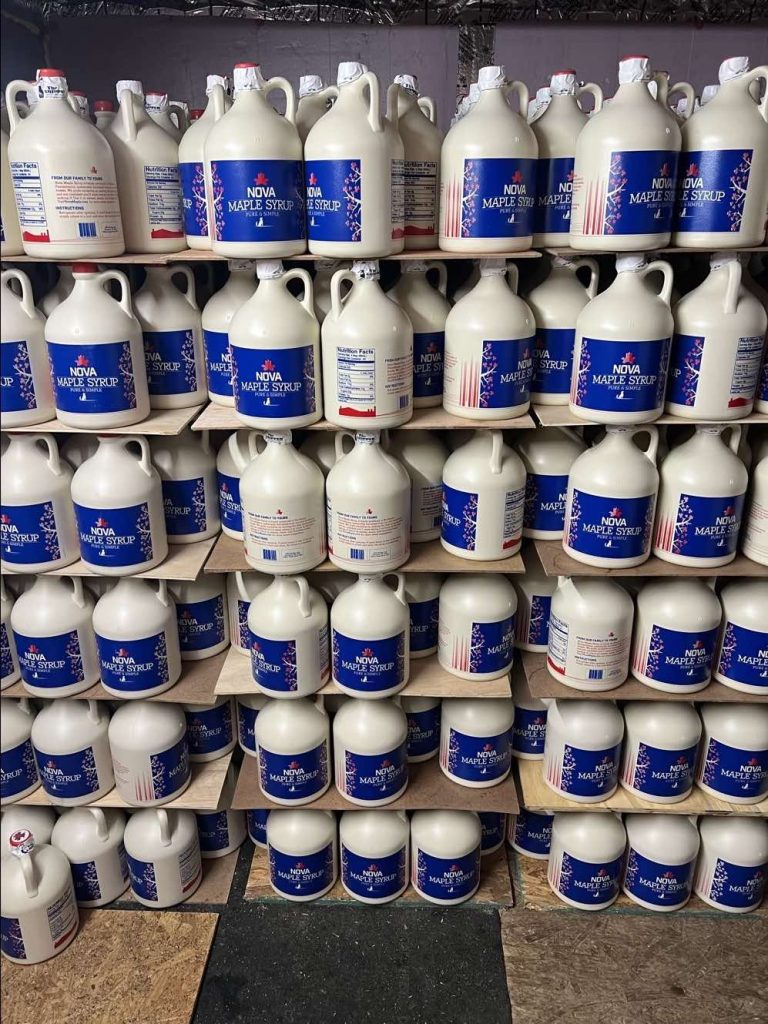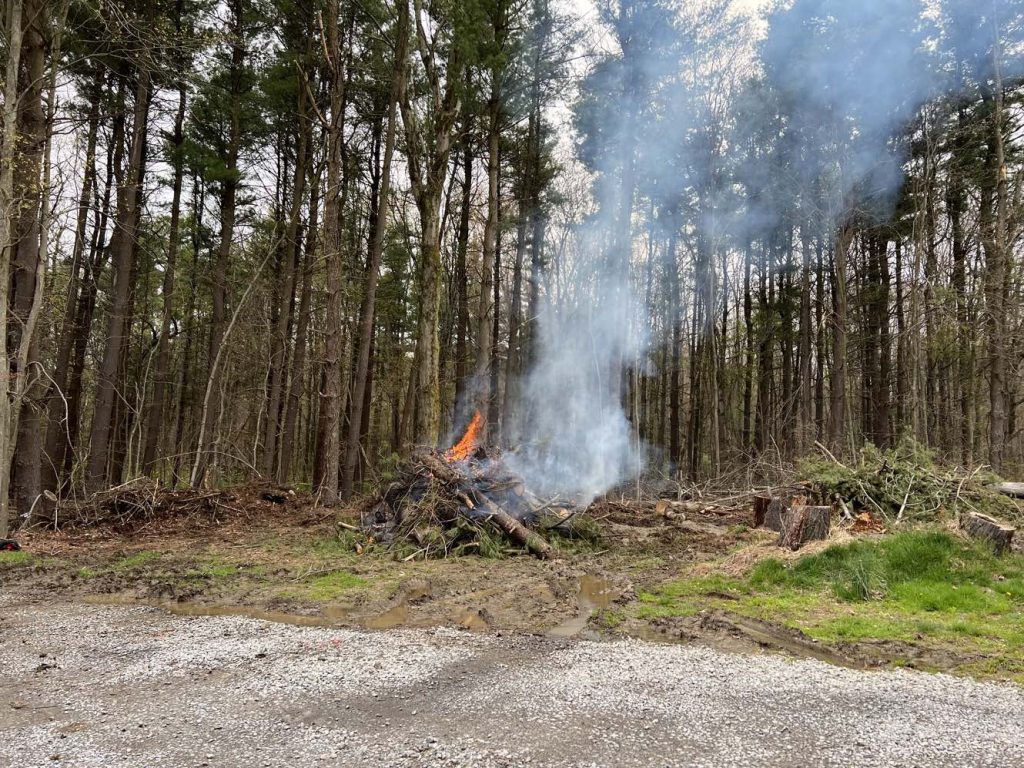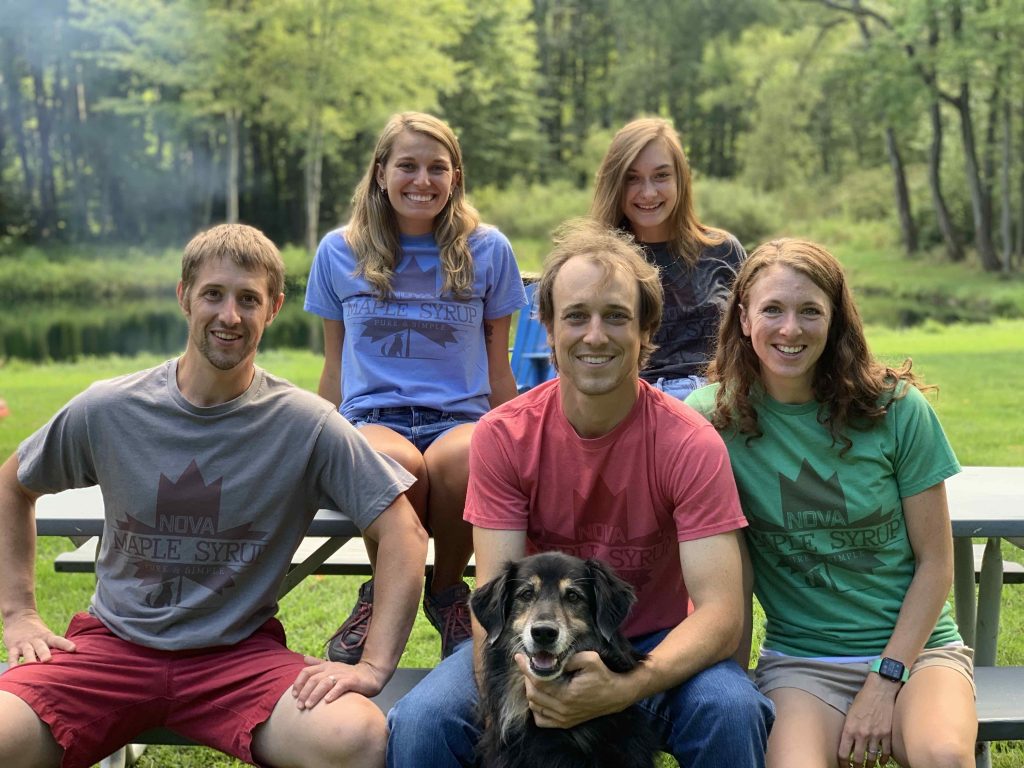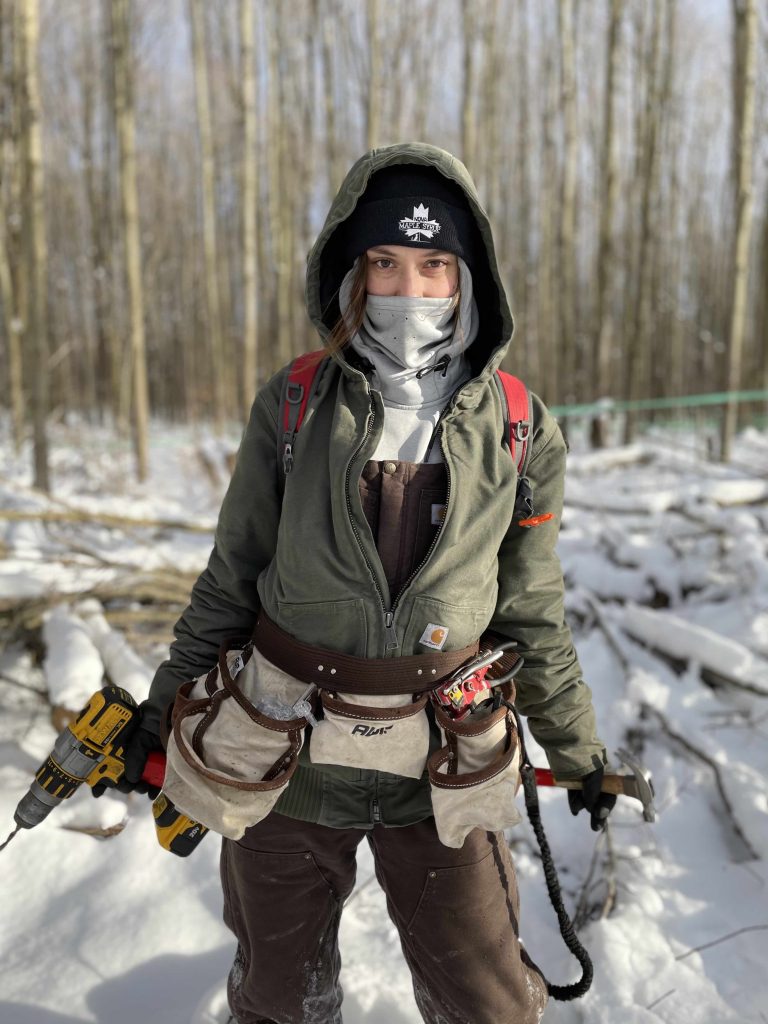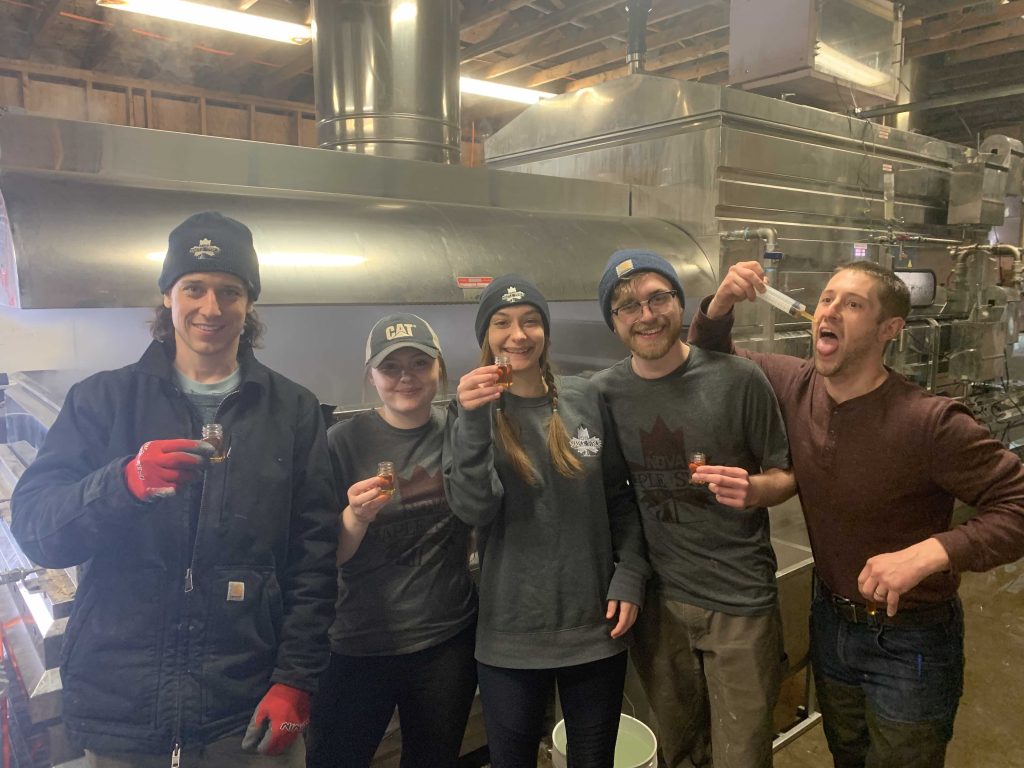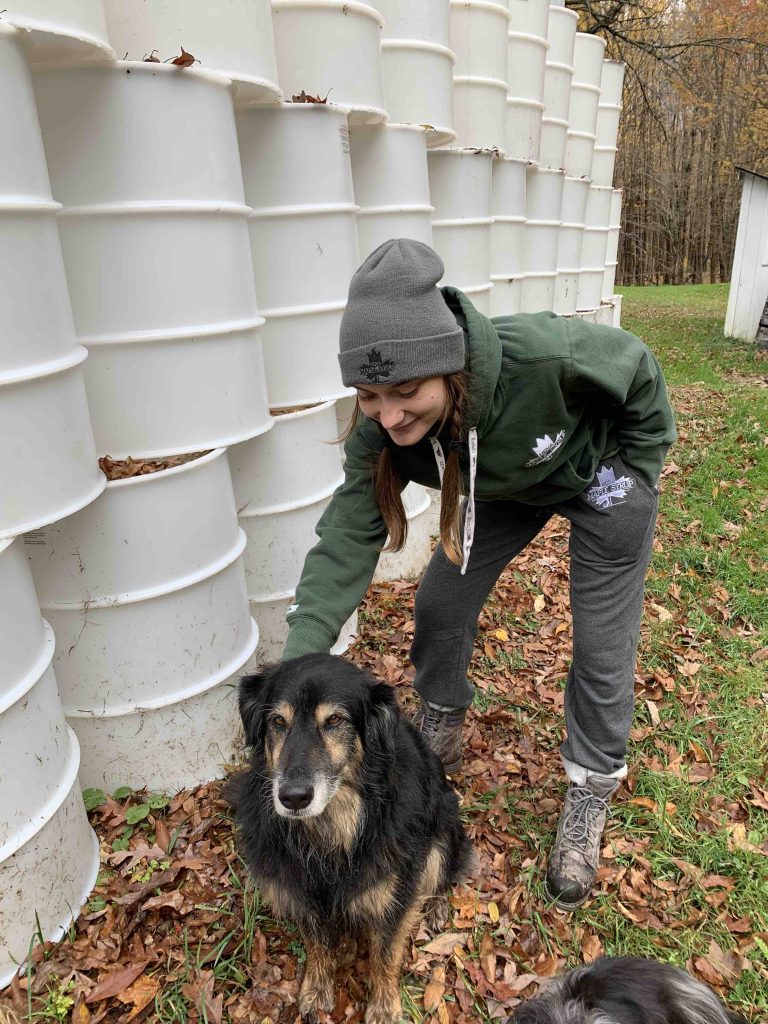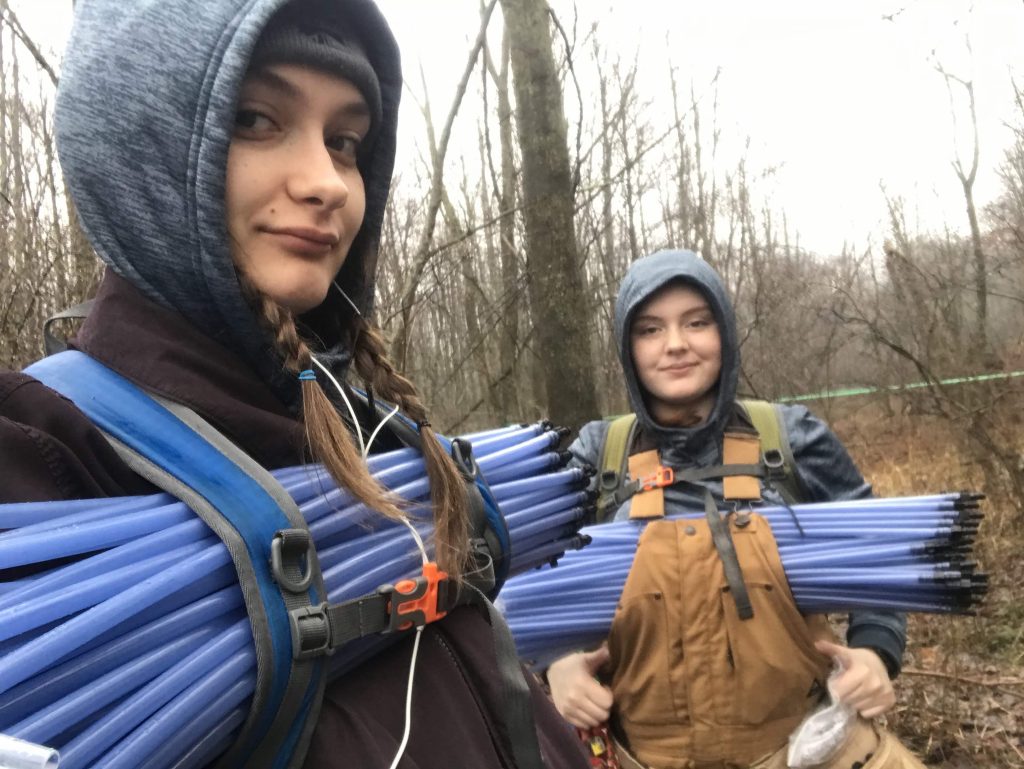Bulk Up
At Nova Maple Syrup we stay busy year round in the sugar shack. We know that free time will be hard to come by November through April, so this time of year we’re bulking up on packaged products and storing them in our cooler. This month we’ve been hard at work packing 3/6 pound sugars and gallon jugs. Lots more to prep, but it’s a good start for mid-June!


